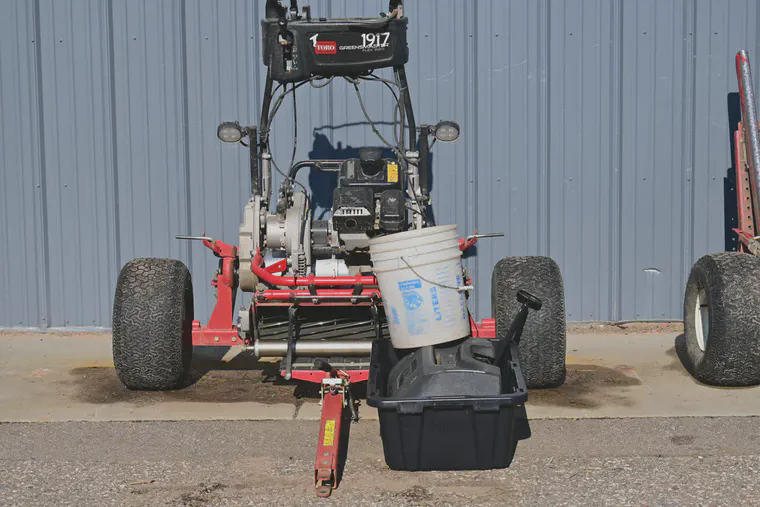Sand in clippings

Grass clippings, fresh, weigh from 300 to 350 g per liter in a clipping volume bucket. Sand, dry, weighs about 1.6 kg per liter in a clipping volume bucket.
That 4x to 5x difference in density is one of the reasons I prefer rapid assessment of growth rate by volume, rather than by mass. Every bit of sand that gets into the clippings adds disproportional error into the mass of the clippings, compared with the small error sand contamination contributes to the volume of the clippings.
When measuring clipping volume, the error is so small that for practical purposes, you can ignore the amount of sand in the clippings. When measuring clipping mass, however, a small amount of sand introduces a large error.

I’ve been surprised, sometimes, when collecting clippings for leaf nutrient analysis, at just how much sand is mixed with the grass. Fortunately there are some easy ways to get enough sand out of the clippings—floating in water, for example—that allow such samples to still be usable for nutrient analysis. Not ideal, but usable.
That’s not the case when trying to measure clipping mass. Getting the sand out of clippings is tedious and impractical for anyone trying to make a rapid measurement of clipping yield. See “Removing Sand from Putting Green Clipping Samples Substantially Reduces Clipping Weight Measurement Error” by Kreuser et al. for a look at just how much work is involved to get sand out.
This chart show how quickly a small amount of sand contamination leads to large errors in clipping mass.

With 10 cm3 of sand in a liter of clippings, or less than 2 teaspoons of sand, the error when measuring the fresh weight of the clippings is 4.8%. Those same clippings, with the same amount of sand, but measured by volume, only have an error of 1%. Note that what I am showing in this chart is for fresh weight of clippings. The error introduced by sand contamination would be amplified when considering these same samples on a dry weight basis.
The take home message is this: clipping volume with a little bit of sand has negligible error caused by the sand.